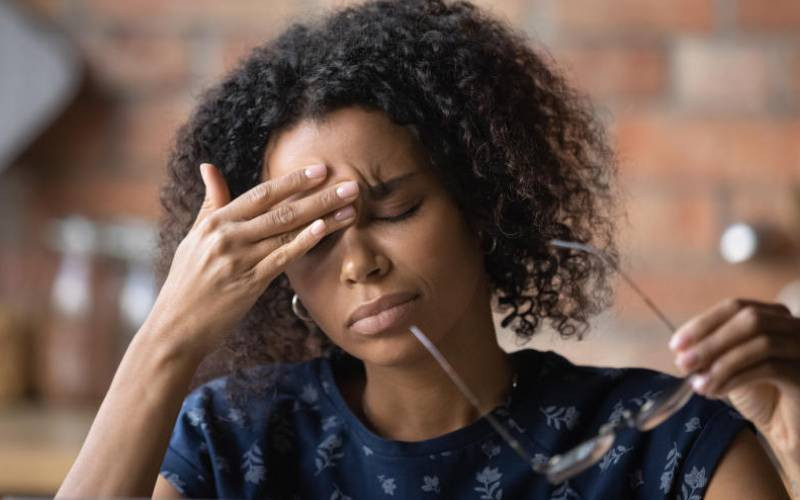
It was anticipated as the family wedding of the year. As it is their tradition, Asha* chose an aesthetic expression of body art to share the joy during her younger sister’s upcoming nuptials.
A henna party, a fortnight before the wedding, was an event she was looking forward to. Black henna tattoos always add to the glamour.
But a few days later she was in a doctor’s examination room. The cute tattoos had turned ugly. It started with a simple rush on her hands, arms and legs. The dermatologist says she is lucky that it was caught and treated early before the infection spread on the entire body.
And it was not Asha’s fault. A global health warning has been issued on the adulteration of genuine henna by adding a lethal hair dye to make it more potent. Dermatologists warn that inclusion of a toxic chemical known as para-phenylenediamine (PPD) is the cause of increased skin reaction in women who had used this body decoration.
Henna was first used for more than 5,000 years in Pakistan, India, Africa and the Middle East as a form of body art derived from a flowering plant that grows 12-15 feet high that belongs to the Lawsonia genus and the English word is borrowed from the Arabic ?inn?.
The henna plant contains lawsone which is a reddish-orange dye that binds to the keratin, a protein in our skin, and safely stains the skin. Certain communities use it as decorative art during weddings, religious ceremonies, pregnancy or for routine beauty. And with two in every five dermatologists in the United Kingdom reporting that they had treated skin reactions due to black henna tattoos, drew concerns on the presence of a hair dye in a skin product applied for its aesthetic value.
The survey by the British Skin Foundation warned that more than half of these black tattoo reactions were seen in children under the age of 16.
Closer home, consultant dermatologist Evanson Kamuri confirms that there are increasing cases of reactions to black henna where patients complain of itching, mild rush and a burning sensation as some of the symptoms.
“The reaction by this black henna is known as contact dermatitis and presents itself by the skin becoming red, itchy, inflamed and can even blister or scar,” says Dr Kamuri, who works at Kenyatta National Hospital.
Irritates your skin
Henna experts have come to discredit the black one saying the pure henna stains a colour in the range of orange, red, brown, cinnamon, brick, chocolate or coffee, than jet black.
And in a warning posted on the US Food and Drug Administration website, the regulator warns that black henna shouldn’t be applied on the skin due to presence of the dangerous chemical that may cause reactions.
“The so-called “black henna” may contain the “coal tar” colour p-phenylenediamine, also known as PPD, which is only permitted for use as a hair dye. In some cases, the so-called “black henna” consists only of hair dye, which the artist mixes straight from the package and applies to the customer’s skin,” reads excerpts of the FDA statement.
By law, all colour additives used in cosmetics must be approved by FDA, with the exception of coal tar colours intended for use in hair dyes the regulator added. In Kenya, these products are finding their way into households through the black market that is popular with aesthetic seekers for their cheap prices.
Contact dermatitis is caused by a substance that irritates your skin and the severity of the rash depends on how long the offending substance had been applied on the skin, Dr Kamuri added.
“In severe cases, it can develop into blisters that later become wounds and eventually a generalised reaction on the entire body that would compromise breathing thus the person has to be admitted to hospital,” says Kamuri.
He advises that when an individual reports such reactions, they should discontinue applying the black henna and consult a skin specialist immediately to rule out the present toxic chemicals on the skin and elsewhere.
“Whereas some people will react to a single exposure, others will do so after multiple use thus its important to carry the tube or a sample of the black henna that caused the reaction, for the doctor to assess the ingredients and could advise on further laboratory investigation.”
Other factors that may also influence the severity of a person’s reaction to a banned substance includes the strength of the substance that caused the rash and ability of the body to fight the reaction.
Besides withdrawal of the upsetting substance that caused the reaction, treatment may also include a steroid cream for the affected part, oral medication to reduce inflammation and antibiotics to fight bacterial infection.
Those who had reported skin reactions to the black dye are also faced with a lifelong sensitivity to PPD, which increases the risk of a severe allergic reaction when using hair dye, the experts noted.
Even with their popularity, Kamuri calls for close inspection of each product sold in the name of henna, to keep away skin reactions.
 The Standard Group Plc is a multi-media organization with investments in media platforms spanning newspaper print
operations, television, radio broadcasting, digital and online services. The Standard Group is recognized as a
leading multi-media house in Kenya with a key influence in matters of national and international interest.
The Standard Group Plc is a multi-media organization with investments in media platforms spanning newspaper print
operations, television, radio broadcasting, digital and online services. The Standard Group is recognized as a
leading multi-media house in Kenya with a key influence in matters of national and international interest.










